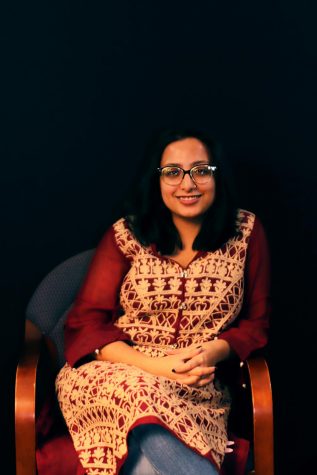UTSA’s Friday Lights Celestial Lights hosted their final presentation of the semester called, “Female Trailblazers in Astronomy: From Past to Present” by Dr. Dina Drozdov. Dr. Drozdov covered notable women in astronomy, from Pickering’s Women to the first upcoming all-female spacewalk.
Edward Pickering worked at Harvard as a lecturer in the late 1800s. To further his research, he hired approximately 80 women to work under him as “human computers.” They became known as Pickering’s Women. According to Dr. Drozdov, they would work for about six days a week at the Harvard Observatory for about 30 cents an hour. Their main task was to complete the Henry Draper Catalogue of stars. The majority of the women in this talk were part of Pickering’s Women, including Williamina Fleming, Annie Jump Cannon, Henrietta Leavitt and Cecilia Payne-Gaposchkin.
Originally Pickering’s maid, Fleming, most notable contribution to astronomy was her star classification system based on hydrogen lines. At the beginning of her career, her work was credited back to Pickering, but Fleming was granted her deserved recognition in 1906 when she became an honorary member of the Royal Astronomical Society of London, though she has also discovered 59 nebulae, >310 stars, and 10 novae. Her most prominent discovery is the horsehead nebula.
Cannon refined Fleming’s star classification system to a seven-letter sequence, which we continue to use today. Aside from this lasting contribution to astronomy, Cannon classified a quarter of a million stars throughout her career. She was the first woman to receive an honorary doctorate from Oxford and went on to collect other honors such as William C. Bond astronomer, the Henry Draper Medal, and officer of the American Astronomical Society.
Leavitt suffered from poor health, but that did not prevent her from making a name for herself in history. She studied stars that oscillated in brightness but had to step away from work after falling seriously ill. Over five years later, Leavitt returned and completed her paper, “1777 Variables in the Magellanic Cloud.”
Payne-Gaposchkin was the final of Pickering’s Women covered in the lecture. She contributed greatly to the educational tracks of astronomy. Not only was she the first female to receive a doctorate from Harvard, but she also became their first female astronomy professor and female chair. During her research, she proposed that the sun contained hydrogen and helium gas. Her claims were viewed as impossible, and Payne-Gaposchkin began to doubt herself. In fact, she included a footnote in her thesis, stating that she was “probably wrong,” but as we now know, she was right.
The first astronomer noted in the lecture outside of Pickering’s Women was Katherine Johnson. Johnson is one of NASA’s most notable “human computers.” She began working during the Great Depression and was hired under NASA’s new diversity policies. When actual computers were developed, people didn’t trust them. In fact, astronaut John Glenn refused to board the rocket unless Johnson verified the computer’s flight calculations. In 2015, President Obama awarded Johnson with the Presidential Medal of Freedom.
Vera Rubin studied the Doppler effect on over 60 galaxies. In her research, she proposed a theory that the universe itself was also spinning, a theory that physicists are still grappling with to this day. Rubin’s legacy established one of the most important concepts in astronomy: dark matter. Rubin looked at the stars on the edges of galaxies, which acted in unexpected ways. She studied the rotation curves of stars, a graph depicting the qualities of a star’s rotations, and they spun faster than the laws of matter allowed. His surprising rotation established knowledge of the existence of dark matter.
Jocelyn Bell Burnell is most acclaimed for discovering a pulsar, a special type of neutron star. Originally, she labeled it as an “LGM,” otherwise known as “Little Green Men,” which was a jab at the existence of aliens. Her team was awarded the Nobel Prize for her work, but she was overshadowed by her male colleagues. However she went on to gain numerous awards in astronomy and, in 2018, she was awarded the Special Breakthrough Prize in Fundamental Physics.
Mae Jemison is an astronaut, educator and doctor. As the first African-American woman in space, but she spent eight days on the International Space Station. Not only has she been to space, she has also traveled with the Peace Corps to Sierra Leone and Liberia. Jemison is an amazing role model for women in science and all STEM concentrations due to her versatility.
The first all-female spacewalk occurred on Oct. 18, 2019. Astronauts Jessica Meir and Christina Koch were on the mission and completed it successfully. Pickering’s Women left a legacy that Meir and Koch are reaping the benefits of. Without their sacrifices and hard work, the road to this all-female spacewalk might have been even longer.
Dr. Drozdov concluded her lecture by recommending a few books that feature women in astronomy and science: “Women in Science,” “Reaching for the Moon” and “Hidden Figures.”













